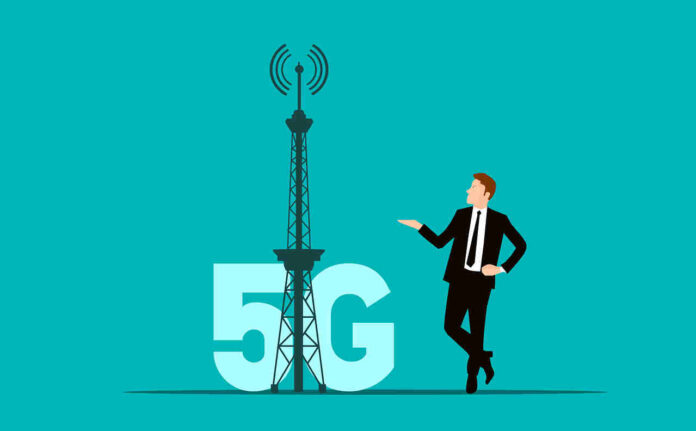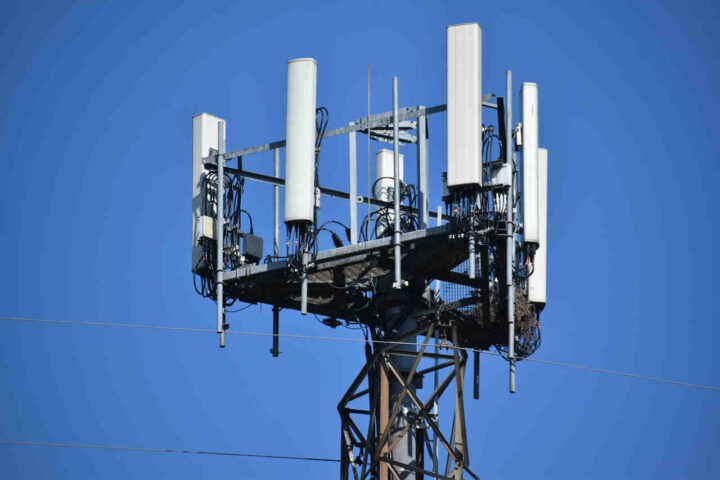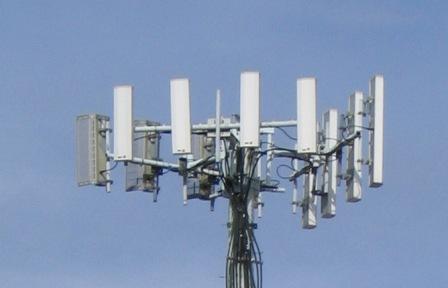
Explaining 5G EMFs and Their Potential Impact on Health

Electromagnetic fields (EMFs) surround us due to the proliferation of wireless technology, including antennas and cell towers. While these technologies have brought us unprecedented connectivity and convenience, concerns have arisen about their potential impact on human health.
The advent of 5G technology has brought with it a new wave of excitement and connectivity possibilities. However, as 5G networks expand, questions regarding the potential health implications of the electromagnetic fields (EMFs) they emit have gained prominence.
This article aims to shed light on the relationship between 5G EMFs and human health, exploring statistics, antenna placement, long-term exposure, affected body components, risk mitigation, and the role of Faraday cages.
Statistics and the 5G Health Debate
The debate surrounding the health effects of EMFs, especially those from antennas, has been ongoing for decades. Now the health effects of 5G EMFs has sparked a flurry of research and discussion.
Some studies suggest potential links between 5G EMF exposure and health concerns, including headaches, sleep disturbances, and even increased cancer risk, but the scientific consensus is still evolving.
However, it’s important to note that the scientific community is not yet in unanimous agreement about these potential effects.
5G Antenna Placement and what make the difference
When considering 5G antennas, their placement can significantly impact human exposure. Antennas situated above or below ground level pose differing implications. Elevated antennas may cover broader areas but could have less direct impact on those below, while those closer to the ground might influence nearby residents more directly.
The Challenge of Long-Term 5G Radiation Exposure
With the evolution of wireless technology, the potential for long-term exposure to 5G EMFs over decades comes into focus. Unlike immediate health effects, which might be subtle or negligible, the cumulative impact of prolonged 5G radiation exposure remains a topic for ongoing investigation.
Most Affected Body Components
The human body is a complex system, and various components could potentially be influenced by 5G EMFs. The nervous system, cellular functions, and DNA structure have been suggested as areas susceptible to disruption. Yet, the exact mechanisms through which 5G EMFs interact with these components necessitate further in-depth exploration.
Mitigating 5G EMF Risks: Practical Steps
For those concerned about potential risks posed by 5G EMFs, several actionable steps can be taken:
Distance Matters:
Maintaining distance from 5G antennas can reduce exposure levels. Living farther away from 5G infrastructure can naturally lower your exposure risk.
Shielding Techniques:
Implementing EMF shielding materials within living spaces could offer protection. This might involve using specialized paints or fabrics designed to attenuate EMF emissions.
Time Management:
Limiting the time spent in close proximity to 5G sources can curtail overall exposure. Managing exposure duration can be particularly relevant in high-density urban areas.
Understanding Faraday Cages: The Basics
A Faraday cage is a conductive enclosure that blocks out external EMFs- electromagnetic fields, essentially creating a protective shield. This phenomenon occurs due to the redistribution of electric charges on the cage’s surface, cancelling out the effects of incoming electromagnetic waves.
The effectiveness of a Faraday cage depends on factors like the conductivity of the material used and the size of openings in the cage structure, but remain subjects of debate. Research suggests that while they might provide some protection, total isolation from 5G EMFs might not be practically achievable.
Grasping Wavelength and Frequency in 5G
Understanding the relationship between wavelength and frequency is vital when discussing 5G technology. Wavelength refers to the distance between wave peaks, while frequency represents the number of wave cycles in a given time. Higher frequency 5G waves have shorter wavelengths, impacting their ability to penetrate objects.
The Connection Between Wavelength and Shielding
For a Faraday cage to be effective against a specific electromagnetic wavelength, the openings in the cage must be smaller than half of that wavelength. This principle, known as the “cage effect,” prevents the electromagnetic waves from passing through the openings. As 5G waves have relatively short wavelengths, Faraday cages designed to shield against them require smaller openings compared to those designed for longer-wavelength signals like FM radio.
Calculating Mesh Size: Unveiling the Formula
The mesh size of a Faraday cage is central to its effectiveness. To determine the appropriate mesh size for 5G protection, a simple formula can be applied:
Mesh Size (meters) = Wavelength (meters) / 2
As 5G operates within the millimeter-wave frequency range, its wavelengths are short—ranging from approximately 0.001 to 0.01 meters. Using the formula, we find that for 5G wavelengths, an effective mesh size should be smaller than 0.005 meters.
Selecting Materials: Conductivity and Performance
The choice of material significantly impacts the performance of a Faraday cage. Materials with high electrical conductivity, such as copper, aluminum, or galvanized steel, are preferred due to their ability to redistribute electric charges efficiently. Copper, in particular, is a popular choice owing to its excellent conductivity and corrosion resistance.
Designing a 5G-Resistant Faraday Cage: Step by Step
Creating a Faraday cage tailored for 5G protection involves several critical steps:
Material Selection:
Opt for a highly conductive material like copper mesh or foil. The thickness of the material is also important; thinner materials might be more suitable for 5G wavelengths.
Design and Measurements:
Plan the dimensions of the cage according to the area you wish to shield. Calculate the mesh size based on the applicable formula.
Constructing the Cage:
Assemble the cage structure with the selected material, ensuring that the mesh openings adhere to the calculated mesh size.
Seamless Integration:
Precisely join the mesh panels, eliminating any gaps that could compromise the cage’s effectiveness.
Grounding for Optimal Performance:
Connect the cage to an efficient grounding source, such as a metal rod buried in the earth. Proper grounding ensures that accumulated charges are dissipated harmlessly.
Limitations and Real-World Application
While the concept of Faraday cages is promising, there are practical limitations to consider. Complete isolation from 5G EMFs might not be feasible due to the interconnected nature of modern life. Moreover, the effectiveness of commercially available Faraday cage products can vary widely, making careful selection essential.
5G concerns for the future
The integration of 5G technology into our lives brings both immense possibilities and growing concerns. While the debate surrounding the health effects of 5G EMFs continues, it’s prudent to take proactive steps to minimize potential risks.
Strategies such as maintaining distance, employing shielding materials, and time management can play a role in reducing exposure.
The potential role of Faraday cages in mitigating 5G EMF impact remains intriguing, but more research is necessary to fully understand their effectiveness. As 5G continues to shape our technological landscape, ongoing research and public awareness will be vital in addressing the intricate relationship between 5G EMFs and human health.
However, it’s important to recognize that while Faraday cages can offer a degree of protection, they might not provide absolute isolation from 5G EMFs. As 5G networks continue to evolve, informed decisions and ongoing research will play a pivotal role in navigating the dynamic relationship between technology and human health.



